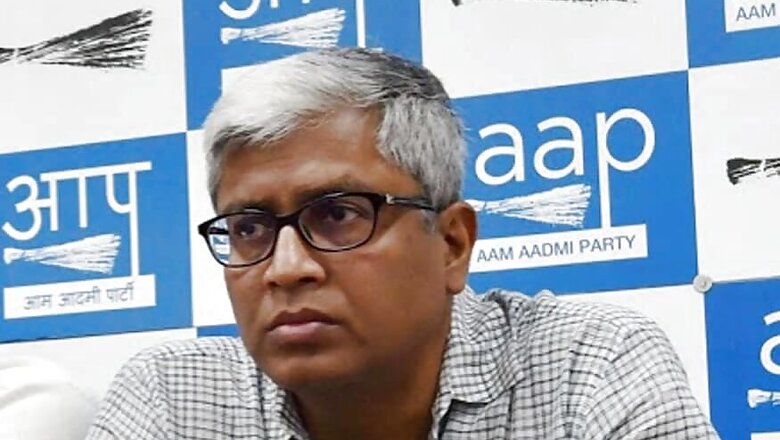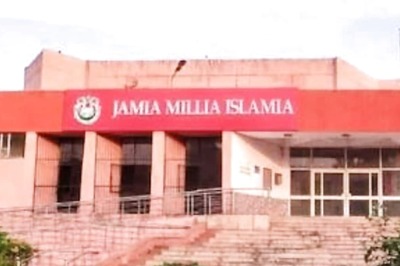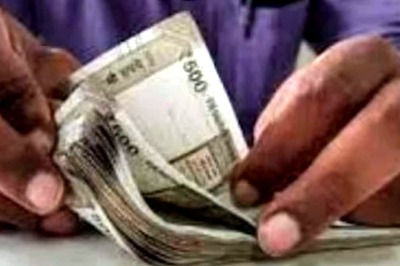
views
It’s said that five years is a longtime in politics. For journalist-turned-politician Ashutosh, the past five years have been roller-coaster ride. He joined the Aam Aadmi Party (AAP) at the height of the ‘India Against Corruption’ Movement. He made his decision to quit the party public a day after its leadership has gone to the court to gag the media from reporting about they being charge-sheeted in the case of alleged assault on Delhi chief secretary Anshu Prakash.
In his Twitter post August 15, Ashutosh wrote, “Every journey has an end. My association with AAP which was beautiful/revolutionary has also an end. I have resigned from the PARTY/requested PAC to accept the same. It is purely from a very very personal reason. Thanks to party/all of them who supported me Throughout. Thanks.”
His leader, or may be erstwhile leader, Delhi Chief Minister Arvind Kejriwal responded in the manner he is known to do best – dramatic. He too tweeted saying, “How can we ever accept ur resignation? ना, इस जनम में तो नहीं।” Ashutosh’s exit, Kejwriwal must realise, does not augur well for the party. He is last of those ‘citizen faces’, who joined and spurred the movement with intent to change the way politics is practiced in the country.
Beginning with Shanti Bhushan, Prashant Bhushan, Admiral L Ramdass, Justice Santosh Hegde, Kiran Bedi, Yogendra Yadav, Medha Patkar, Rajmohan Gandhi, Anand Kumar, Kumar Vishwas and now Ashutosh, the list of professionals who stand disillusioned with politics of AAP is certainly long and unending. These people contributed to building a movement and a party which sought to challenge not just the hegemony of established political outfits but also a political culture which prospered on nepotism, caste, corruption and electoral malpractices.
The names mentioned above are actually representative of a large mass of people, including young professionals, who in the winter of 2015 burnt midnight oil with their laptops to run a campaign for change. They joined the crusade taking leave from their work, facing salary cuts and in some cases even job losses.
However, in Kejriwal’s scheme, these people do not feature anymore. Vishwas and Ashutosh stayed back in the party with the hope that their wages would be paid with a nomination to the Rajya Sabha. That did not happen and their claims were rejected in favour of people well-versed in money-matters.
Kejriwal’s politics today and his strategy for survival is totally dependent on the policy of subsidy. He has complemented this politics of subsidy with a media policy subduing true information. The latest case in point is their plea before the court, mentioned earlier in this article, to gag media from reporting on the chargesheet filed in the chief secretary assault case.
It’s not that Kejriwal doesn’t realise that decline in the fortunes of his party has been rapid. His party in fact has announced that it would not contest more than 100 Lok Sabha seats in 2019 and would focus on Delhi. This announcement has come after opposition leaders refused to have him onboard while putting up a joint candidate for the Rajya Sabha deputy chairperson’s poll.
Kejriwal followed this snub with the announcement that he would not be part of any opposition conglomerate during the 2019 Rajya Sabha polls. In the process, he may have frittered away the ‘sympathy’ of some of the regional leaders like Andhra Pradesh Chief Minister N Chandrababu Naidu, his Karnataka counterpart HD Kumaraswamy, Kerala CM Pinarayi Vijayan and West Bengal CM Mamata Banerjee.
While these leaders had registered their support for Kejriwal and his ministers when the latter had sat on an unprecedented ‘dharna’ inside the ante-room of Lieutenant Governor’s office, they are, however, still to speak for AAP leaders after they have been charge-sheeted in the assault case. It could be first indication of Kejriwal’s isolation within the opposition camp.
Despite tall claims, the fact remains that the party is now in the desperate fight to save itself even in Delhi. From winning 67 out of 70 in 2015 Assembly polls, in less than two years AAP was reduced to 48 out of 270 in civic body polls. Every bypoll, whether Assembly or municipal corporation, conducted post-2015 Assembly elections has reiterated their declin. There is nothing to suggest from the results of these bypolls that, as claimed by AAP leadership, the ‘mohalla clinics’ and ‘education reforms’ were stirring voters back to them.
Smelling a chance for revival, the Delhi Congress leadership has repeatedly cried foul over the Election Commission decision not to appeal against the HC order restoring the membership of the 20 AAP MLAs disqualified for holding office of profit. For the Congress leaders, it has meant a chance denied at restoring their political credibility after the zero-seat performance in 2015.
Where does AAP go from here? In Ashutosh, it has lost its last established urban, educated face. Given the reactions of AAP leadership to such crises in the past, Kejriwal is unlikely to go for any real time course correction. He has put his bet of a subsidy-propelled poll campaign and is unlikely to change strategy. It would be a different AAP contesting Lok Sabha polls in 2019 from what it was in 2014.
(The writer is a senior journalist and political commentator. Views are personal)


















Comments
0 comment